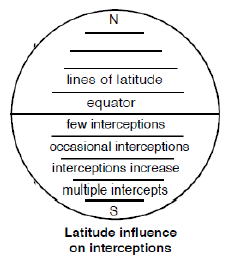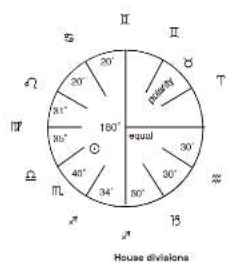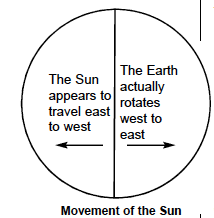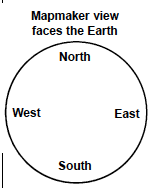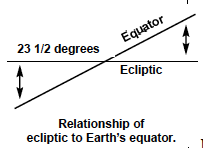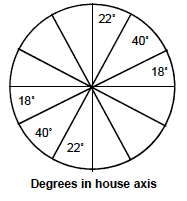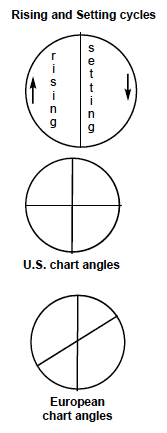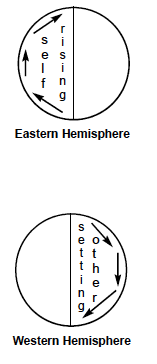by Marilyn Muir, LPMAFA

This work is licensed under a Creative Commons Attribution-NonCommercial-ShareAlike 4.0 International License.
Astrology is a study of cycles. Whether that cycle be…
- the rotation of our planet,
- the travel of our Moon around the Earth,
- the travel of Earth and its planetary brothers and sisters around our local star… the Sun,
- Precession of the Equinox (changing of the ages) as our Sun traverses our Milky Way Galaxy,
- to even greater and greater cycles as we move outward into the universe and the cosmos itself.
- All are essentially circular in motion, all expanding from some common point yet to be determined by Astronomers, circling and spiraling ever outward.
The universe is so complex, particularly from our miniscule viewpoint. How do we study, learn and apply the “As above, so below” of our spiritual forbearers? Astrologers take a still snapshot of a moving sky and study it. This accidentally but automatically creates a misconception that charts begin and end with that snapshot. The sky never truly stopped moving, and our lives are a series of these still shots of that continually moving pattern. We study that snapshot for clues, totally out of context with the wholeness of the pattern and wonder why we fall short at times. Keeping in mind that the snapshot (birth chart) is the initiating point of an emerging pattern can help us bridge that gap in consciousness.
Cycles are found throughout nature, from the life cycle of everything we deem “alive” to the ocean’s pulse, the rising and setting of the Sun, the predictable cycle of growth of a child. All life follows its own rhythm. For our own convenience, we agree on patterns of time, space and motion. We arbitrarily define a beginning and end of a circle (which has no specific beginning or end). We label up and down, right and wrong, and all the other familiar polarities of living. We agree on the concept of wholeness, but we seem to have finite intelligence. We do not know all there is to know about everything. That is the province of the Creator, the Perpetuator and the eventual Destroyer of its creation (which includes us). We measure the universe and indicate patterns within it. One such pattern is the Zodiac of constellations that straddles our orbital path around our Sun, twelve equal divisions of one year’s linear time and the space it travels, twelve roughly 30˚ increments of both time and space. In western astrology, the beginning is 00 Aries at the moment of the spring equinox (the exact moment of equal day and night). Know that Aries was not always the beginning of the Zodiac. While the Earth travels 365 1/4 days per year to complete its orbit, the measure by our standard is the easily divisible 360˚ circle, a built-in fudge factor.


The ancients developed their body of information from observing the night sky. Their astrology was lunar in nature – they interpreted what they could see. While the Sun is shining, you cannot see much of anything. Many centuries later, other astrologers decided the system needed to be solar based and shifted the whole body of information to reflect that desired solar base. Hmmm. Can anyone see the potential for discrepancies? Go back to “they interpreted what they could see”. They could only see the half of the sky which was visible at night. While they did have multiple patterns to observe, they primarily used those that were visible, changing the patterns as new ones rose and old ones set with the seasons. Houses may not have existed in our current form during that early stage of astrology, or perhaps were not the houses Astrologers use today. Many talented Astrologers have been diligently studying those old records for years to glean whatever new information is possible. My personal thanks to the researchers.
A few hundred years ago, the emerging physical sciences gave rise to new sources of information and new ways of using and applying emerging data. It had been re-discovered that the Earth was round, that it traveled around the Sun, and that all the bodies were present all of the time, but just not visible at any one location on Earth at any one time. Awareness above and below the horizon line became clearer and new systems emerged – among them was the house system we rely upon so heavily in our current era. We divided our 24-hour day:
- by clock into two individual twelve-hour circles for day and night (12 x 2 = 24) and
- astrologically into twelve two-hour consecutive segments in order to place the heavenly bodies in their proper relationship to each other from our Earth (geocentric) perspective (12 x 2 =24).
As with most other things, humans disagreed on the divisions of time and space. Multiple house systems sprung up and the arguments persist. Choice of house system is a full study of its own and is not part of this teaching article. But, briefly…
- An Aries Rising chart places 0˚ Aries on the cusp of house 1, and assigns twelve successive increments of 30˚, one for each zodiac sign, and with each house beginning with 0˚ of the next following sign.
- A Sunrise chart calculates the Sun on the cusp of the first house and the balance of the houses with planets as naturally calculated (unequal); or… assigns 30˚ successive equal increments beginning with the Sun’s degree and minute (equal).
- A Noonmark chart places the Sun on the cusp of the 10th house and either assigns the 30˚ successive (and equal) increments or the common unequal house division.

What makes an unequal house division?
- Longitude and latitude on the globe. Longitude determines the MC based on the time and zone at the location of birth. The Ascendant and balance of house cusps are based on that MC at the latitude of birth. The closer to the equator, the more equalized the houses become.
- As we move toward the poles in either direction, distortion creeps in;
- houses expand or contract, interceptions are produced, life stops being idealized (equal) and becomes reality (unequal).
My personal use of Sunrise or Noonmark charts is based on the unequal house system.
Then there are Placidus, Koch, Regiomontus, Campanus, and lots of other house systems, many with strong supporters. What makes the difference between the unequal house systems? All house systems are based on a division of time and / or space. Placidus is the most popular in western astrology. For a long time, Koch was strongly followed. The latest, which I have not studied, is 00˚ of a sign on the Ascendant, common in Vedic charting. I prefer naturally calculated houses. There are so many systems, it is impossible to do them justice in this brief explanation. I would suggest a small research project is in order so you can make an informed value judgment on which system you choose. I did that study, many, many moons ago. I came out on the side of Placidus, with Porphry a close runner-up. Please do not take my word for it, but do your own research. The computer programs make calculation easy.
You can do the Porphry house system by hand without much effort. Take your MC and Asc, determine the distance between them, and then divide that distance in 1/3rds. The divisions become your intermediate house cusps. Do the same thing with the Asc to the IC. The other half of the chart is a mirror of the MC/Asc/IC/Dec picture. These cusps do get triggered multiple times over a lifetime, so accuracy is important.
Remember, planets are the “what” of our experiences, signs are the “how”, houses are the “where”, aspects are the “why”, and activations are the “when”. For now, we will focus on “where” – the houses. Houses are…
- Twelve divisions of space (on the globe) determined by time and location (longitude, latitude and time standard) of birth.
- Twelve divisions of experience, our mundane experience arenas.
- Twelve types of activity or focus for activity.
- Location, location, location.
Hemispheres and Quadratures
The Sun (or any planet) rises in the east, climbs toward its culmination near noontime, then begins its descent toward the western horizon, continuing to drop to the bottom of the chart at midnight where it begins its ascent toward the eastern horizon for the next day. In order for any of this to occur, northern hemisphere observers must face south, with east on the left side and west on the right side, leaving north to be at the observer’s back. Why? The Sun can only rise 23.5˚ north or south of Earth’s equator (north in the summer and south in the winter), and is on the equator at the spring and autumnal equinoxes. So the Sun in the northern hemisphere (where I live and study) is visible when facing south. If we were to look for it while facing north, we would never see it. Observations will be different for the southern hemisphere. We know that only at the equinoxes are days and nights equal, but we have arbitrarily agreed to use equal days and nights in our charting. Hmmm. Research is needed. Anyone with time, talk to me. I do have questions and ideas.
So, by arbitrary decision, we have twelve hours of daylight and twelve hours of nighttime. Since there are twelve divisions and 24 hours to divide, that should mean that each house should have a time value of around two hours. Just know that two hours is flexible in order to accommodate the distortion caused by season and by latitude. Synopsis: a house has a value of approximately two hours of any 24-hour period, and varies with the seasons. Daylight occurs from sunrise to sunset and nighttime from sunset to sunrise, with periods of shadow at dusk and dawn.


“As Above, So Below”… Astronomers measure, astrologers interpret. What kinds of activities are commonly performed during “daylight” or commonly during “nighttime”?
- Daytime hours are visible, participatory, external, and experiential.
- At night we go home, shut the door (not visible), let down our hair, turn inward (internal), and ruminate about our experiences. Therefore…
- The houses above the horizon and the planets they contain are more externalized in nature.
- The houses below the horizon and the planets they contain are more internalized in nature.
- The cycle of life.
What about rising and setting? Planets at the midnight points of their travel (as far as possible below the horizon line, called anti-culminating), are beginning their journey upward toward the horizon line. This is an optical illusion produced by the counter-clockwise spin of the zodiac as each degree passes over that horizon line once every day. Earth’s rotating motion “forces” the planets to rise in a clockwise direction, passing “over” the horizon as that horizon line races to encounter the planet, forcing those slow-moving planets across every house degree once each day. Know that there is a difference between actual planetary orbital motion and what we view and map from Earth’s daily rotation. House-wise,
- The planets “rise” from midnight to sunrise to noon and “set” from noon to sunset to midnight.
- A rising planet has a completely different application from a setting planet. Likewise the houses.

While the signs are attitudes and mannerisms, the houses are arenas for experience. More about that in a moment.
- The deepest, darkest part of the chart is the midnight point – the IC, 4th house cusp, literally “the womb”. Moving towards the eastern horizon, light begins to emerge.
- Moving towards the MC, 10th house cusp, growing towards full light.
- Moving towards the western horizon, the energies start to prepare for what has been external to become internal (sunset).
- Moving from the western horizon to the IC (4th cusp), we become more reflective and internalized in nature.
The houses, which run counter-clockwise in our charts because they represent the revolving earth, show the verve and action of ascension and the inner, reflective retirement of de-scension.
- The left, rising side of the chart, signifies the emergence and the significance of self.
- The right, descending side of the chart, signifies the involvement and needs of other.
Quadratures
The previous describes four modes of expression by detailing pairs of halves. Up/down, south/north, objective/subjective, visible/invisible – each are matched pairs. Take in a deep breath. Hold it…… you must let that breath out (the other half of the breathing cycle). Both are necessary, no one part is stronger than another, but equal and equally necessary.
Carl Jung described human behavior as consisting of intuition, feeling, sensation and thought. Putting those hemi-cycles together gives us the quadrants. (Note that I will now describe these quadrants in reverse order of the counter-clockwise motion examples above. Why? Because description of the twelve hours and the activities contained within each segment was more useful. To follow the flow of awareness as described below, starting from the Ascendant and moving through the quadrants counter-clockwise (widdershins) is easier to follow and understand:
- Lower left, Asc to IC: subjective awareness of self Intuition
- Lower right, IC to Dec: subjective awareness of others Emotion
- Upper right, Dec to MC: objective awareness of others Sensation
- Upper left, MC to Asc: objective awareness of self Thought

Angular, Succedent, Cadent

- The houses run counter-clockwise from their beginning point, the Ascendant.
- The horizon line is the point of the Ascendant, the zodiac location on the eastern horizon at the moment of birth. That place is the cusp (dividing line) for the first house. A number of degrees later, counter-clockwise, you encounter another dividing line or cusp, that of the 2nd house. All the degrees between the Ascendant and the 2nd cusp belong to the first house.
- The 2nd house begins with the cusp as described and moves counter-clockwise toward the next division, the 3rd house cusp, etc.
- The houses that begin on the horizon line (east and west) and the culminating line (south and north) are called the angles of the chart. The whole of that house is thereby considered angular. The four angular houses are the 1st, 4th, 7th and 10th, also called the Ascendant (Asc), IC, Descendent (Dec), and Midheaven (MC).
- The houses that succeed (follow) those four angular houses are called succedent houses: the 2nd, 5th, 8th and 11th houses.
- The remaining houses that follow the succedent houses and terminate with the upcoming angle are called cadent houses: 3rd, 6th, 9th, 12th.
- The significance of the cadent houses have largely been ignored, which was and is a mistake. Gauqueline, in his enormous research project, proved that cadent houses largely contribute to what you do overall with your life.
- Angular houses are considered strongest and most observable, and life tends to happen very directly to the individual.
- Succedent houses have a great deal to do with our value systems, financial and otherwise.
- Cadent houses tend to be more psychological and adaptive in nature, and are actually bridges between hemispheres. A closer look will show why.
- The most personal point of self, the angle that begins subjective self-awareness, is the Ascendant. A newborn comes in with only one thought… ME. This is the most personal house because it represents the projection of the individual onto the environment (sowing).
- The next angle (IC, 4th) moves from I/ME to other and those in our immediate environment come to the forefront in our lives.
- The next angle (Dec, 7th) moves from the subjective awareness of others to objectifying our relationships and defining them as partnerships and committed associations.
- The last angle (MC, 10th) moves us between objective awareness of others to objective awareness of self, the rewards part of the cycle, and what we get for what we did or did not do (reaping).
- Angles focus or initiate the activity, succedent establishes, and cadent distributes and prepares for transition at the next angle (bridging).
- Subjective awareness of self: ME Subjective awareness of others: FAMILY
- Objective awareness of others: PARTNER Objective awareness of self: REWARD
We can have too much or too little of anything… including houses…
- What if all experience were in your face all the time? What would have value? What could bridge?
- What if all experience were value oriented? Stagnation could occur, change would be impossible.
- What if all experience were a bridge, but not concrete or focused?
- All types of experience are necessary. Too much of anything is too much. Too little of anything is a hole or gap.
- Compensation is possible. Over-compensation is possible.
Do an actual occupied house count of these divisions to aid your reading of what is or isn’t valuable in the reading or what reinforces other patterns.
Life, Wealth, Association, and Abstract

There is another division of houses that can assist us with their meaning: Life, Wealth, Association, and Abstract. Not as well-known as Angular, Succedent and Cadent, this division is valuable as background to general house understanding.
- What life is all about: psyche, soma, pneuma: body, mind, and spirit: 1, 5, 9.
- What do we value, financial and otherwise – personal possessions, work, career: 2, 6, 10.
- Associations span the gamut of siblings, partners, friendships and group associations: 3, 7, 11.
- Abstract covers all our intangibles – roots and family, joint use of resource, hidden qualities and self-undoing: 4, 8 and 12.
The houses are built on this background information. Houses are mundane, physical experience, the “where” of your attention, the arenas in which we live and move and have our being. Some will be harder to grasp than others, like all subjects. Putting all these functions together should make houses quite easy.
- House Hemisphere / Quad Jung Type Distinction
- 1 Subjective self aware Intuition Angular Life (body)
- 2 Subjective self aware Intuition Succedent Wealth
- 3 Subjective self aware Intuition Cadent Association
- 4 Subjective other aware Emotion Angular Abstract
- 5 Subjective other aware Emotion Succedent Life (soul)
- 6 Subjective other aware Emotion Cadent Wealth
- 7 Objective other aware Sensation Angular Association
- 8 Objective other aware Sensation Succedent Abstract
- 9 Objective other aware Sensation Cadent Life (spirit)
- 10 Objective self aware Thought Angular Wealth
- 11 Objective self aware Thought Succedent Association
- 12 Objective self aware Thought Cadent Abstract
Overall Meanings
Natal Each hemisphere of houses (there are four) distinguishes certain developmental experiences. Each quadrature further refines and specifies that development.
- If a hemisphere or quadrature is heavily tenanted, those developmental experiences and arena are emphasized.
- If a hemisphere or quadrature is vacant, those developmental experiences and arena are not as emphasized. Nothing is unimportant, but we cannot learn everything all the time or we would never make it through life.
- Additionally, if a single planet occupies either a quadrature or a hemisphere, the lessons represented by that hemisphere or quadrature tend to be focused through that singleton and those house experiences.
Natural sequencing The houses are a circle you can imagine as starting from the front of your face and ending at the back of your head (demonstrate the circle with your own hand and head). The houses are sequential in your development, taking you from the most personal essence of yourself, through successive steps into your enlarging involvement with others, and eventually returning back to the self. The Ascendant is your face. The 12th house represents your blind spot because you cannot see behind your own head… therefore it becomes the source of self-undoing.
- The subjective self-aware quadrant of houses emphasizes development of the self and intuition.
- The subjective other-aware quadrant emphasizes initial interaction with others and emotion.
- The objective other-aware quadrant emphasizes externalization, relationship, and sensation.
- The objective self-aware quadrant emphasizes externalized self-development, thought.
With Angular houses (1, 4, 7, 10), life comes right at you. You participate in those experiences directly: your body, your home, your partnership, and your career.
In Succedent houses (2, 5, 8, 11), life is experienced through our various value systems: your personal possessions, your creativity, your partnership resources, and results from career.
In Cadent houses (3, 6, 9, 12), you must adjust, adapt, and bridge: your thought, your service, community thought and re-thought.
Life houses (1, 5, 9) teach you about life and living: your physical self, your soul (creativity), and your spirit (reaching for the heights within yourself and others).
Wealth (resource) houses (2, 6, 10) teach you about your participation in material life: personal material possessions and resources, earning a living, and making a name and a career for yourself.
Association houses (3, 7, 11) teach you about all sorts of relationships: close siblings, cousins and neighbors, partnerships both business and personal, and group associations and friendships.
Abstract houses (4, 8, 12) teach you the subtleties of life, core values, basis for life, joint efforts, catastrophies, give and take, and of course your personal blind spot.
In addition, each house has a polarity, a partner just across the house wheel from itself. Houses are arenas for experience, the stage on which we all participate, in twelve steps. The first half of the pairing (houses 1 through 6) teaches the personal equation. The pairings (7 through 12) teach collectively.
- 1/7 teaches I/You/We 2/8 Mine/Yours/Ours
- 3/9 I think/You think/We think 4/10 Inner/Outer Security
- 5/11 My/Our Creativity 6/11 One-on-one/Group service
Follow the natural sequence of the houses. Put the various elements together and experiment with concepts. Look at what the houses mean physically. Look at what they mean spiritually. Look at what they mean in all various areas of your life. We know that every person in our lives is somewhere in that house system. For example…
- You, yourself, your physical body is the 1st (Asc).
- Your parents are the 4th /10th (IC/MC).
- Your business or personal partner is the 7th (Dec)
- Your authority figure is the 10th (MC).
- Your siblings are in the 3rd.
- Your children are in the 5th.
- Your friends are in the 11th.
There is so much more to this – I will outline it separately in the Derivative House System, also known as wheeling the houses.
Overall Delineation
Your overall approach to reading will determine the significance you give to houses.
- Are you an Astrologer who starts with the Ascendant and works their way around the chart?
- Are you an Astrologer who starts with planets and systematically works through them?
- Are you an Astrologer who starts from the broad perspective working yourself through into the nitty-gritty of the chart?
- Or do you start with details (the trees) and work your way out to the forest?
- Are you an Astrologer who starts with what jumps out of the chart at you?
- Are you helter-skelter or organized?
- Do you win some and lose some? (All are critical to your use of houses.)
For me, in order to be cohesive and thorough, and to not inadvertantly skip entire packets of important information, I use a system. I start wide, gradually refining my focus. As I read, significant patterns emerge, reinforce themselves, and point me in the right direction. My favorite is natal charting. By knowing that what got me into all this in the first place was self-discovery, then you will know why natal is tops with me. However, that is not always what people want or need. Perhaps they feel they understand themselves quite well (not usual). They need to know what is going on now, what is happening in a relationship, their job, or their health. When time is a factor, I might ask the person I am reading to tell me what issues are of prime importance. I will do those first, then spend the remaining time on what is less critical. In other words, while I have a system, I remain flexible to the situation (even with six fixed natal planets). Using that wide perspective ending with nitty gritty, I will read (houses only for this lesson): hemispheres, quadratures, singleton, house count, weight each segment in the life of the native, and then I may or will move to overloaded, intercepted, wheeling the houses, etc.
Hemispheres
- Perform an actual physical body count for each half of the chart and note that information on your form.

- Underline or circle the strongest counts: above / below (n / s) or left / right (e / w.)
- Does this chart have an emphasis on developing objectivity or subjectivity? Why?
- Self or other? Why?
- Do you suppose the person has developed the opposite quality sufficiently, or do they have an overabundance and that needs to be balanced?
- It is possible to encounter a chart where the hemispheric patterns are balanced. Remember balance is a reading and not a cancellation factor.
Quadratures
Using the dominant hemispheres look to the quadrature. Is there a section of the chart that is heavily tenanted, focusing a greater percentage of experience through the activities represented by that segment of the chart? Blend your meanings of hemispheres to determine quadrature influence.
Singleton
Is there an emphasis by singleton? Does one planet focus all of the experience or lessons indicated by that quadrature or hemisphere?
Hemispheres or quadratures with average tenancy tend to imply average influence. Do empty sections represent absence, ambivalence or lack of importance? Can you apply that information to the life of the individual? Influence by hemisphere or quadrature is one more tool to look at the overall thrust or direction of the life and its purpose. Write it out.
House Count Look at the chart on a reduced scale, the planets in the individual houses, the areas of physical, mundane reality. Your entire life is contained within the wheel of the chart. Astrologers chose a division of twelve with each house representing approximately 1/12th of everyday life and experience. Any count that involves the houses involves personal experience and not necessarily attitudes, desires or urges, which are defined by the signs and planets themselves. Do a physical planet (ten) count and write it out for:
- Angular (1, 4, 7, 10) Succedent (2, 5, 8, 11) Cadent (3, 6, 9, 12)
- Life (1, 5, 9) Wealth (2, 6, 10) Association (3, 7, 11) Abstract (4, 8, 12)
Remember that any information generated through the house system is:
1) dependent on accurate birth time, and 2) related to physical experience.
Note: House cusps move faster than planets. As time moves forward on the clock, the faster-moving cusps increase degree by degree counterclockwise, which automatically moves the slower-moving planets in a clockwise motion. If your house count is off, this part of the reading will be inaccurate, and the person may not identify with what you are saying. Make a note of any discrepancy and rectify if you can,.
In Nicholas DeVore’s Encyclopedia of Astrology, there is another old division. I have not used it but it deserves mention and potential research.
- Self: 12th, 1st, 2nd, 3 Companions: 4th, 5th, 6th, 7th Public 8th, 9th, 10th, 11th
Weighing the chart Weighing simply means observing emphasis or weakness in the various categories. Before you decide that a “lack” exists, does another system substitute, compensate for, or eliminate that apparent lack or absence? Example: a chart with no Earth planets but with Saturn on the Ascendant as a potential compensating factor. Synthesize the dominant influences as a possible pointer to that which is truly significant. Write it out.
Overloaded houses Speaking of weaknesses, is any house so full of planets that it is on overwhelm? Many moons ago I took an AFA workshop by Donn and Leone Forrest from New Zealand. Their book Astrological Chrestomathy is the only reference material I have ever encountered. Their very workable premise is that a house with four or more planets occupying it natally is overloaded with possibilities and is overwhelming to the native, who will avoid participation in those house activities, instead dumping the possibilities on the polarity house. Too many planets in the 4th will dump out the 10th, etc. This could change your house readings significantly.
Intercepted Because of irregular-sized houses, it is possible for a large house to absorb an entire sign. That causes two adjacent house cusps to be ruled by one sign. For births close to the equator, there are no interceptions. As the birth latitude increases north or south, the possibility of interception increases. In fact it becomes so frequent that it is possible to have more than one interception occurring in a chart. Since the northern hemisphere shows up more frequently than the southern hemisphere in my personal readings, know that latitudes of 50˚ north may have one or more interception.
Interceptions travel in pairs – what is true for one side of the chart also occurs on the other. A 1st house interception requires a 7th house interception as well, etc. If there are no planets in that intercepted sign, no planets are intercepted, only the houses. If there are planets in three signs in an intercepted house, only the planets in the intercepted sign are considered intercepted. Planets in the sign on the cusp and the succeeding cusp sign are not intercepted. Only the planets in the intercepted sign are considered intercepted.
For this workshop, the effect on the house system is primary. As an example: Scorpio on the cusp, Sagittarius intercepted, Capricorn on the 3rd cusp. One planet in Scorpio, planet(s) in Sagittarius and a planet in Capricorn, all in the 2nd house. Only the planet(s) in Sagittarius are intercepted. The intercepted sign acts like a secondary ruler, under the surface, rising occasionally to claim a piece of the rulership of the 2nd house, usually not expected, and always contrary to the sign on the cusp. (All adjacent signs are contrary to one another in some way.) Scorpio on the 2nd cusp denotes a person who may be private or secretive about their finances, likes to be in control of those issues, and plots and plans carefully. Sagittarius is a far more gregarious, happy-go-lucky, risk-taking energy. Can you imagine the surprise, not only of onlookers, but also the native, when that Sag comes surging out, periodically or intermittently, to totally confound that Scorpio rulership? Intercepted planets are “delayed but not denied”, requiring permission of the cusp ruler to express their energy. Planets do not like interference, so this is not always comfortable and delay could screw up the timing.
Cuspal What if a planet is on the cusp of an upcoming or outgoing house? If a planet in just inside the actual house cusp (leading edge of the house), it is considered to be truly in that house, without worrying about the influence of the leading cusp. If a planet is just inside (within 5˚) of the ending cusp of a house, you will need to consider the influence of that succeeding house on the nature of the planet. Why? The house cusps are listed counter-wise. The spinning earth moves through the more stationary zodiac quite rapidly, approximately 1˚ every four minutes on the clock or 360˚ in 24 hours. Earth’s spin forces the houses to rise toward the eastern horizon more rapidly than the planet can move on its own. The effect is that a planet spends about two hours in any house then backs into the next house at its terminating cusp. That planet has had two hours of succeeding house influence just prior to taking up residence in the actual house of its position. That influence may be slow to release, as there is a “memory” that has been carried forward for a short time and influence (I use 5˚).
Occupation and Rulership One of the best sources I have found for this is Eileen McCaffrey’s Graphic Astrology: A Home Study Course. Individual listings are given for each “Planet in House” and its association with the house of its rulership. This book might be out of print, but if you can locate it, know that it was my very first astrological book and has served me well over the years. For this concept, also read Basic Astrology Theory and Practice by Leo Covenant.
Wheeling the Houses (Derivative House System)
While using an individual’s own natal chart is the best procedure, we can still locate our significant others in our personal charts. As mentioned earlier, by and large we look to the 3rd house for siblings, the 4th for family in general and domestic parent in particular, 5th for children, 7th for spouse, etc. Every person or circumstance in our physical lives is shown by the physical house system. Many times I am asked about the native’s children and their general well being. Looking at the 5th for all children (what if the native had eleven children?) is a bit vague, even for a single child. How do we build some depth into our reading? Let me back up for a moment and present a system for reading natal planets in a more comprehensive way, and then we will apply that same system to reading the people in a natal chart.
Briefly repeating, when you read a natal chart, it is best that you have a comprehensive system to organize and present the myriad details a chart can develop. If you run helter-skelter over the chart, you will have a hit and miss reading, sharp in some areas, and void or weak in others. As an early reader having thousands of bits on information on a person, I felt the totality of the person was somehow missed. This goaded me into developing a systematic process of reading in which I started from the widest perspective, gradually narrowing the focus until I had a framework on which to hang all the detail, and the totality of the person stayed intact.
Once that system was mastered and became second nature, a deepening of each element was needed. How to do that? Each planet represents an energy, an urge, a driving need within the individual. That urge is colored by the sign through which it operates and manifests most clearly in the matters of the house it occupies and the house(s) it rules. That energy is conditioned by all the elements we have previously studied: dignity, detriment, exaltation and fall (sign and house), retrograde, station, interception, dispositorship, etc. That energy is especially conditioned by the aspects with which it is involved. How can we isolate one planet in a chart, explore it individually and develop a deeper grasp of its energy and effect in the life of the native?
Solar Chart For a simple illustration, we will use the analogy of a solar chart in which you place the chosen natal Sun on the Ascendant (the equivalent of a dawn birth) and equal-house the other houses starting with the sign and degree of the Ascendant (e.g., 29 Gemini on the 1st, 29 Cancer on the 2nd, etc.). Each of the planets are then dropped into this equal house chart by degree placement: 1 Leo would be early in the 2nd, 28 Sagittarius would be on the 6th house side of the 7th house, etc. With this visual concept in place, you have a wholistic representation of the energy of the Sun – the ego, self-identification, will, all the keywords that describe the concept of the Sun. The Sun now has the full range of expression represented by the house system. The Sun is (the Asc), it has a value system (the 2nd), it has communication skills (the 3rd), it has roots (the 4th), it has creative self-expression (the 5th), it serves (the 6th), it has a shadow self or not self (the 7th), etc. The Sun has individual strength or weakness by dignity, detriment, exaltation and fall. The Sun may act as its own dispositor, be disposited by another planet, be mutually received, or be part of a “round robin” with no conclusion. It cannot be retrograde or at station, but it may be intercepted, aspected or unaspected. All these items contribute their own flavoring to the energy represented by the Sun. The Sun in the sky is the central gravitational force around which all the other bodies orbit – the cohesive factor within our solar system. Without the Sun, we would be space dust.
You can examine each planet individually using this system. Put the planet you want to study on the Ascendant, equal house the balance and drop the planets in as described, and then read the overall energy and pattern relative to the planet occupying the Ascendant position.
For additional information, please see my article on the Derivative House System: http://www.marilynmuir.net/articles/the-derivative-house-system-another-layer-of-reading/
There is another way to do this (of course). Manly Palmer Hall in his Astrological Keywords book (pages 162-163) apparently took the natal chart with all the house cusps and made a new chart, again starting with the Sun on the Ascendant. He did not mention the equal house method so I believe he started with the natal Sun on the Ascendant and the succeeding natal house cusps were placed in order around the new chart with the natal body placements naturally falling into place. This chart would be read similarly to the Solar/Equal house chart above, but parts of this reading could be quite different from the equal-house version.
My suggestion would be that you use your own chart as a teaching example (you do know yourself best) and set it both ways to see which choice provides you with the best information. Many examples would be similar, but many examples could vary widely. As we know, the house system distorts as we move away from the equator towards the poles and interceptions develop as the individual house degree-spans distort. This could make a difference in the reading of the two layouts as to application to the body being examined. Using the interception concept, there can be no interceptions in an equal house chart. Take the time to do a couple of examples to both learn the concept and to determine which system gives you the best information. Teach yourself how it works. It then becomes background information for any other chart you read moving forward.
©2001 Marilyn J Muir, PMAFA Derivative house system©2006 Marilyn Muir, PMFAFA balance of article

This work is licensed under a Creative Commons Attribution-NonCommercial-ShareAlike 4.0 International License.
